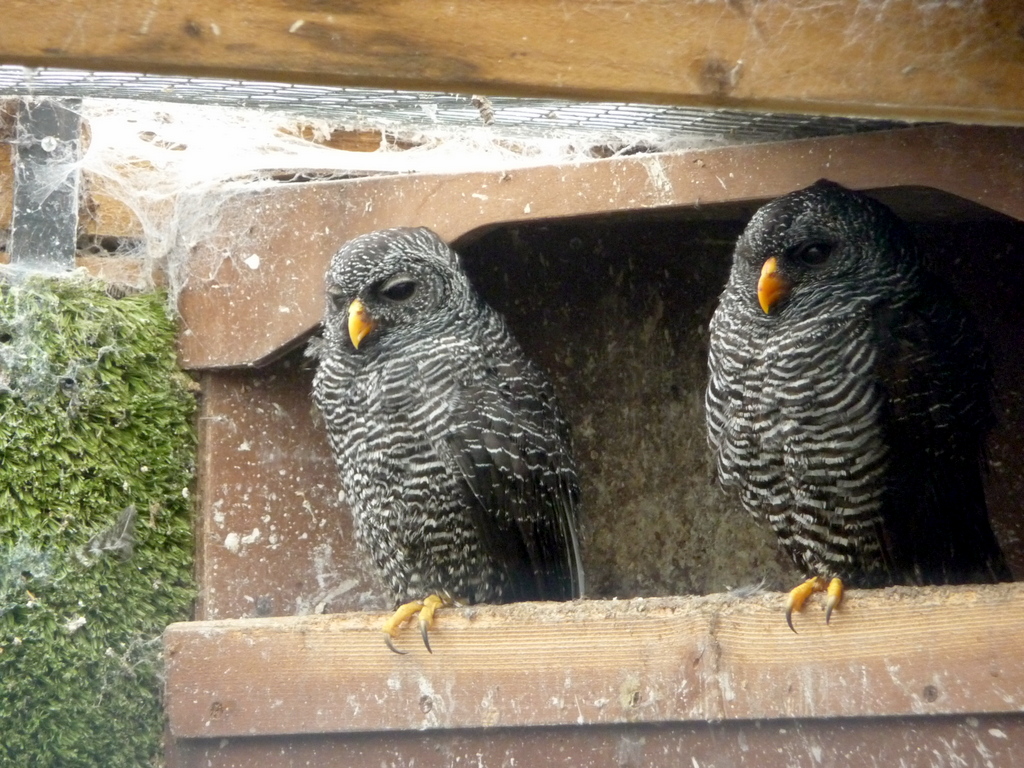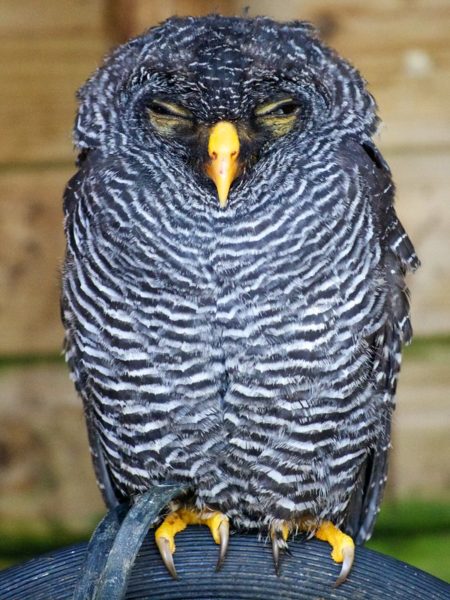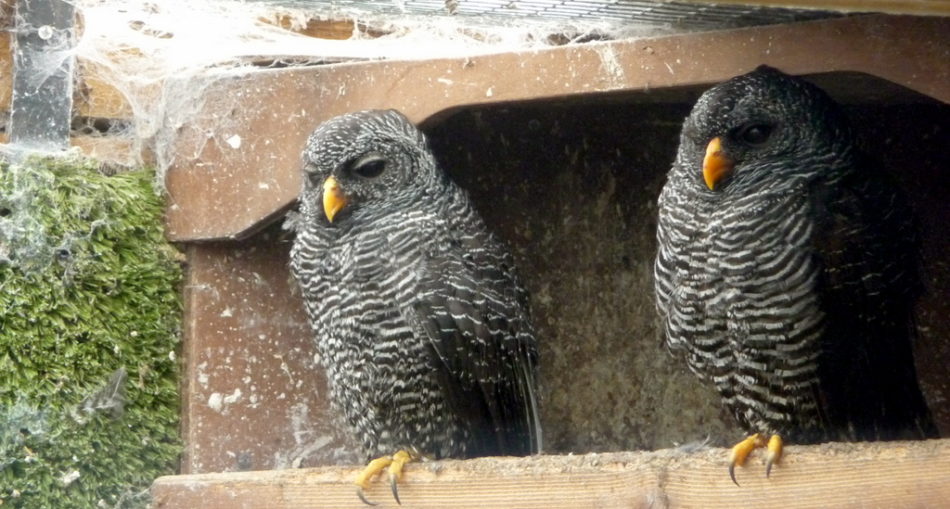The Black-Banded Owl is a strictly nocturnal bird and is almost never spotted in daylight. It lives in forested areas, far from the human prying eyes. Their diet consists of small insects- even bats! They are very protective parents to their one hatchling. This species of owl is non-migratory and native only to South America. It is found locally in Guyana and other South American countries like Argentina, Bolivia, Brazil, Colombia, Ecuador, French Guiana, Paraguay, Peru, and nearby Suriname and Venezuela. The scientific name of this neotropical bird is Strix huhula. While there are no other names, it is often mistaken for the Black and White Owl. Read on to find out about this beautiful nocturnal creature.

Black-Banded Owls – Photo by Christine Matthews (https://www.geograph.org.uk/more.php?id=3162644)
Description Of The Black-Banded Owl
Black-Banded Owls are medium-sized, generally about thirty to thirty-six (30–36) cm large. Their heads are rounded and facial discs black. Like the rest of their body, their face is covered in arcs of whites while the rim of their face and eyebrows are finely dotted in white and black. Black-Banded Owls have pink eyelids and eyes which varies from brown to dark brown. Their beaks are a bright yellow but can also be a pale orange-yellow colour. Their chin is a black patch. The feathers on the upper part of their bodies are sooty-brown to blackish while flight feathers are solely sooty-brown, striped with pale bars. Their primary feathers are black and tail blackish-brown with about five (5) thin bars of white and one white terminal band. The underparts are made of black and white (typically broader) bars. Feathers go all the way down to the base of their toes which are yellow with the claws having dark tips.
Scientific Classification of The Black-Banded Owl

Black-Banded Owl- Photo by Daniel (https://www.flickr.com/photos/loshak/7251952326)
- Kingdom: Animalia
- Phylum: Chordata
- Class: Aves
- Order: Strigiformes
- Family: Strigidae
- Genus: Strix
- Species: S. huhula
Habitat Of The Black-Banded Owl
The native habitat of the Black-Banded Owl is subtropical or tropical forests. However, it can also be found in banana and coffee plantations in these forested areas as well as forest clearings. It is prone to living in lowlands around five hundred (500) metres but the highest altitude recorded was one thousand one hundred (1100) metres in Argentina.
Diet Of The Black-Banded Owl
This owl is known to eat insects like praying mantises, locusts and beetles. In some cases, they were found to be eating moths and feeding them to their young. They also consume small vertebrates and mammals like bats.
Reproduction Of The Black-Banded Owl
There is little information about the reproduction of Black-Banded Owl. It is believed that the female is responsible for incubation and brood, much like any other species of owl. During the incubation period (September to November) the eggs are incubated around the clock except being left alone for a few minutes. After hatching the same behavioural pattern was noted. Both parents are active in the defence of their nest, which usually contain one hatchling.
Interesting Facts About The Black-Banded Owl
- These birds are only active during the night since they are nocturnal, like most owls. During the day, they roost in a well-hidden location and become active at dusk or sundown.
- Black-Banded Owls like to make their nests in forked branches and their clutch usually has only one hatchling.
- While these owls may not breed every year, they tend to reuse their previous tree forks for their nests.
- The songs of male Black-Banded Owls are a fast series of about four (4) guttural notes, which increase in pitch and volume. This is followed by a loud, hoot and sometimes a second one for emphasis. Females are higher in pitch and almost wailing.
- Bats were found in the stomachs of the Black-Banded Owls, which means they also eat bats.
About The Black-Banded Owl
The Black Banded Owl is a mysterious bird since there is not much known about them. They tend to inhabit forested areas and eat insects and small vertebrates. If you’re lucky enough you can spot them near the Atta Rainforest Lodge, Iwokrama, Guyana. You may spy them at rest during the day but remember not to get too close or disturb the owl. You will recognize them by their yellow beaks and bars on white decorating their bodies. This is simply one of the most majestic birds found in Guyana
Article References:
Discover more from Things Guyana
Subscribe to get the latest posts sent to your email.







